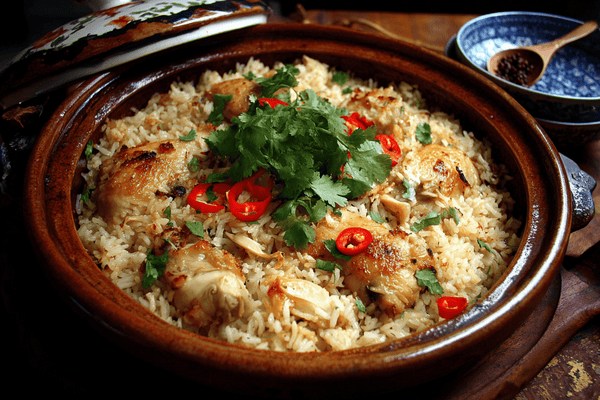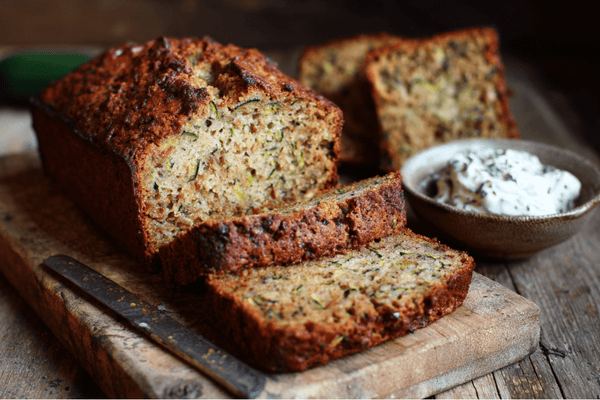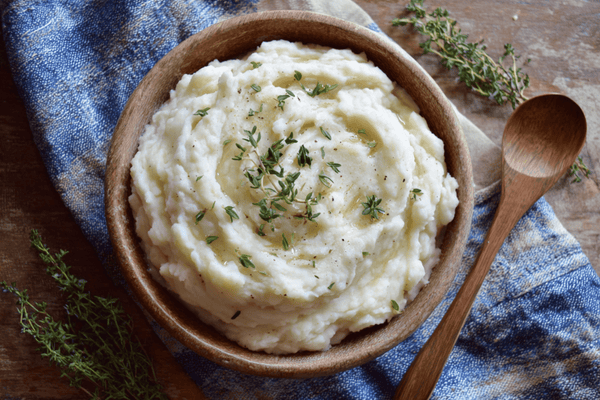
Breakfast, they say, is the most important meal of the day. While here in the UK, we are used to toasted bread and or a fried egg, what people eat around the world for their first meal upon waking is quite different.
Many would argue that the Japanese breakfast is among the most superior. It’s nothing like what we have on our plates here in the western world but it’s certainly a taste sensation and will fill you up for the morning.
While there are various takes on what appears on a Japanese breakfast, the most traditional version consists of a bowl of white rice, some miso soup and some salted salmon, commonly known as shake. We did tell you that it is vastly differently from what we’re used to!
But if that mouthwatering dish has got you itching to make a traditional Japanese breakfast, then you’ve come to the right place. In this guide, we’ll be giving you some tips on how best to prepare your Japanese breakfast recipes and serve your Japanese breakfast as well as a lot of other useful information. Let’s begin.
Table of contents
- A Bit More About the Japanese Breakfast
- A Bit About the Various Dishes In a Japanese Breakfast
- Steamed Rice
- Miso Soup
- Grilled Fish
- Fermented Soybeans
- Pickled Veg
- Dried Seaweed
- Side Vegetables
- How to Make the Perfect Japanese Breakfast
- 36 Hours Before Serving
- 12 Hours Before Serving
- The Morning of Serving
- Final Thoughts
A Bit More About the Japanese Breakfast
If there is anything you will take away from eating a traditional Japanese breakfast, it’s that it will be one of the most unique meals you have ever eaten. What’s surprising is that this breakfast is made up of components that we are used to seeing on a lunch or dinner plate.However, with this in mind, a Japanese breakfast is not designed to be overly filling or heavy. You can quite easily adjust the portion size to suit your own needs and the way that the food is prepared means that it isn’t oily and won’t sit uncomfortably on your stomach as you try to get through the morning.
Normally, a Japanese breakfast is made up primarily of miso soup, white rice and some kind of protein. Most of the time, this protein comes in the form of fish which is grilled with the skin on. However, there are many different takes on this and while that is the most basic form, you’ll also find a whole other range of foods including nori, kobachi, natto and lots of different Japanese pickles. On top of this, many restaurants will serve a green salad on the side.
One of the most obvious things about a Japanese breakfast is how healthy it is. When we think of Japanese food in general, we imagine dishes that are beneficial to our health and breakfast is no different. Since there is such a good balance between all of the dishes, you are getting all of the most important nutrients in one meal. You’ve got protein, carbs, fibre and a range of vitamins and minerals. Because of this excellent nutritional balance, you will find that a Japanese breakfast will keep you going all the way up to lunchtime, maybe even beyond!
A Bit About the Various Dishes In a Japanese Breakfast
It might seem a little strange to a westerner when they first see the different elements of a Japanese breakfast. Breaking it down to see the benefits of each dish and what they bring to the table can help to make this seemingly odd meal make a little more sense.
Steamed Rice
In Japan, they call this dish Gohan and it can be either white or brown rice. This is one of the key components of the traditional Japanese breakfast and serves as an accompaniment to the protein elements of the meal. We’d go as far as to say that without it, you couldn’t class your meal as a proper Japanese breakfast.Miso Soup
 Miso Shiru, as it is known in Japan, is a type of traditional soup. It's made using fermented soybean paste. There could be a whole host of ingredients but some of the most common are things like tofu, green onions, various types of Japanese mushrooms, wakame seaweed, clams and many others.
Miso Shiru, as it is known in Japan, is a type of traditional soup. It's made using fermented soybean paste. There could be a whole host of ingredients but some of the most common are things like tofu, green onions, various types of Japanese mushrooms, wakame seaweed, clams and many others.Making miso soup requires a degree of hard work since it is traditionally made from scratch. It’s an incredibly common staple in Japanese households but it can be purchased as an instant soup, if you prefer.
Grilled Fish
Another of the key elements of the Japanese breakfast is grilled fish. It can be cooked in the oven or in a hot pan and serves as one of the main protein components of this meal. But the Japanese don’t overdo it on the flavourings here. Instead, they use just a little salt and rely on the taste of the fish for its deliciousness.Salmon is one of the most commonly used types of fish for the traditional Japanese breakfast but there are others depending on where you go. For example, you might be served dried horse mackerel but when you’re making your own breakfast, really any type of fish is suitable.
Fermented Soybeans
Our Japanese friends call these natto and where the traditional breakfast is concerned, you’d normally find them served over the top of your steamed rice. One of the main benefits of this dish is that it is super high in protein.The texture is a little slimy and the dish can be quite aromatic but with the addition of things like green onions, soy sauce, mustard and seaweed, it’s quite easy to alter the taste to your liking. Again, while this dish would usually be made from scratch, it’s not uncommon to find it as a convenience food in Japanese supermarkets all over the world.
Pickled Veg
 When eating any dish that is made up from rice in Japan, you will typically be served pickled vegetables; in Japan, they call this tsukemono. While there are many different types of tsukemono, pickled plum is one of the most popular. This is because of how versatile it is. The Japanese not only eat it on a traditional breakfast but with other early morning dishes like rice porridge.
When eating any dish that is made up from rice in Japan, you will typically be served pickled vegetables; in Japan, they call this tsukemono. While there are many different types of tsukemono, pickled plum is one of the most popular. This is because of how versatile it is. The Japanese not only eat it on a traditional breakfast but with other early morning dishes like rice porridge.Again, you could pickle your own vegetables if you want the most traditional experience. But if this is a little time-consuming, and we wouldn’t blame you if you said it was, you can buy tsukemono in almost any Asian store.
Dried Seaweed
 Known as nori, in Japan, seasoned dried seaweed is one of the most important staples in Japanese food. It is traditionally eaten alongside steamed rice but it is so flavoursome that many people opt to eat it on its own.
Known as nori, in Japan, seasoned dried seaweed is one of the most important staples in Japanese food. It is traditionally eaten alongside steamed rice but it is so flavoursome that many people opt to eat it on its own.If you do want to boost the flavour even more, you would serve nori with a small helping of soy sauce on the side. You’d then dip your nori into the sauce and wrap everything with rice.
Side Vegetables
As well as pickled vegetables, it is not uncommon to see an array of vegetable-based side dishes on a Japanese breakfast, known as kobachi. This can come in many forms so if you really want to get a feel for it, it’s worth dining at several different places in Japan and seeing what they serve.These side dishes are usually quite small and can be made up from seaweed, pickled veggies, cooked veg and even salads.
How to Make the Perfect Japanese Breakfast
If there’s one thing that should go into making the perfect Japanese breakfast, it’s time. You can make this meal in less than an hour if you want to but for the most traditional serving, you’ll want to invest a couple of days. Yes, you read that right; days!But don’t let that put you off. This can be something of an event in your household, even if it only happens every now and again. While every chef will approach the preparation of their Japanese breakfast differently, these are my top tips for getting it spot on.
36 Hours Before Serving
You can start your preparation as much as 36 hours before you plan to eat your Japanese breakfast. It is now that you’ll choose your fish. If you have access to a fresh fish market then I’d urge you to go here as opposed to just sourcing your fish from the local supermarket. It’s an experience in itself and the food will be much fresher and you might even get a good deal.For two people, I’d suggest going for nothing smaller than an eight-ounce fillet. The fish you choose is down to you but salmon is a popular choice. It’s also worth looking at where on the fish the meat was taken from. Fattier fillets from the belly are typically best.

Get your fish home and take around ¼ ounce of salt and give the fillets a generous coating. Make sure that you push the salt right into the meat so that it really sticks to it. Once you’re done, you’ll need a glass container in which to place the fish. Line the container with some kitchen towel, pop the fish inside and then cover it. You’ll want to keep this in the fridge but don’t leave it until you’re ready; take it out around every 12 hours and replace the kitchen towel. You can also take this opportunity to flip the fish over to the other side.
12 Hours Before Serving
When you have just 12 hours to go before you serve your traditional Japanese breakfast, you will need to start thinking about preparing the miso soup. Miso soup is made using dashi broth so you’ll need to prepare this now.This can be done by taking around 450ml of water and half an ounce of kombu. Soak this overnight in cold water to ensure the best flavour. Rushing the process with warm water won’t result in such a flavoursome dish. We did warn you that you’d need to invest some time!
Now is also a good time to quickly pickle some veg, if you want to. Although this isn’t an essential step.
The Morning of Serving
It’s not long now before you get to indulge yourself and be rewarded for all your hard work. But there’s still a little way to go. For starters, you are going to need to take your kombu and the water and add this to a saucepan along with some fresh water. Turn on the stove and allow it all to heat up.While this is happening, you can use this time to prepare your rice. It’s a good idea to rinse your rice before cooking. You can do this by running it under fresh water until the water runs clear. If you have a rice cooker, use this, otherwise, you will need to steam the rice on the stove.

Back to your dashi broth; once the water is simmering, you will need to add around a half-ounce of katsuobushi. Leave this for a few minutes before removing it along with the kombu. You can get rid of both of these now. That said, some people like to use the kombu in the meal, dressing it in sesame oil and vinegar. You can even keep the katsuobushi and add a little soy sauce as a serving over the top of your rice.
Once you have finished your dashi, you will usually need to wait around 20 minutes for your rice to cook. But there’s no time for sitting around; you can use this time to prepare all the other aspects of the meal.
Your salmon fillets can now be removed from the fridge and you’ll place these onto some tin foil on a tray. Make sure your broiler is nice and hot before you put them in.
If you are making any fresh sides, this 20 minutes is the perfect time to get them ready. You might cook broiled aubergine, blanched spinach or any other vegetable side you prefer.
If you’re going to go for the aubergine then this is a great beginner dish as it is so easy to make. You’ll need to score the vegetable around the circumference on both ends. After this, be sure to score along the skin as well. The reason for this is that it makes it so much easier to remove the skin once you have cooked it. Then simply broil it for around three minutes each side. You should notice the flesh starting to give. Now you can peel it and cut it up. The best way to serve this is with katsuobushi (we told you those leftovers would come in handy) and scallions. Adding a little soy sauce and ginger also gives the dish a real boost.
Setting the table for your traditional Japanese breakfast is just as important as preparing the food. Start by laying out any ingredients you can make such as nori or natto as well as your vegetables. If you haven’t had time to pickle your own veggies then you can use prepared ones from the Asian supermarket. Just be mindful to pick lots of different flavours and colours to give your table the most versatility.
Now you are pretty much ready to enjoy your meal. All that’s left is to remove the rice ready for serving. If you’ve used a rice cooker, there’s no need to take the rice out until right before you eat as this will prevent it from losing heat.
The only thing to make sure of is that your dashi is ready. So, around ten minutes before serving, allow it to boil and add in a few clams as well as a bit of miso paste. The salmon fillets can then go into the broiler for around five to six minutes. This method of cooking is much quicker than roasting and helps to lock in the flavour so you’ll have a really tasty breakfast. One thing to keep in mind is that traditionally, the salmon skin would be nice and crispy and the flesh just a little charred. That is what the Japanese call perfection. Oh, and only ever serve it when it’s piping hot; preferably still spitting a little.
Final Thoughts
 A traditional Japanese breakfast is like nothing you will have ever tried before. While here in the UK we are used to very specific foods for breakfast, our friends in the Far East enjoy a much more diverse and healthy start to the day. With lots of protein, white rice and an array of vegetables, a Japanese breakfast is a unique meal. Don't forget to accompany your Japanese breakfast with warm green tea!
A traditional Japanese breakfast is like nothing you will have ever tried before. While here in the UK we are used to very specific foods for breakfast, our friends in the Far East enjoy a much more diverse and healthy start to the day. With lots of protein, white rice and an array of vegetables, a Japanese breakfast is a unique meal. Don't forget to accompany your Japanese breakfast with warm green tea! 

